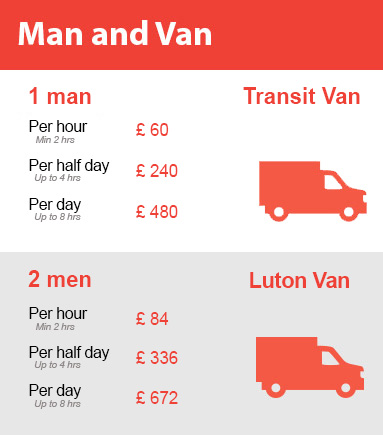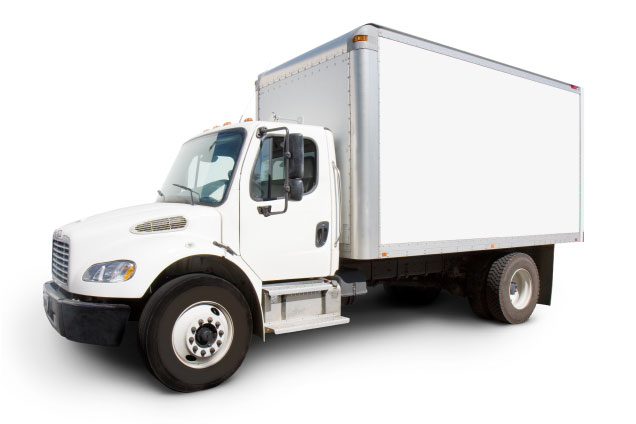Packing Essentials: How to Organize When Relocating
Posted on 19/05/2025
Packing Essentials: How to Organize When Relocating
Moving to a new place is exciting, but the process of packing and organizing can feel overwhelming. Yet, with the right strategy and essential tips, you can transform your relocation into a smooth experience. This comprehensive guide to packing essentials for relocating breaks down everything you need to know about organizing your belongings, reducing stress, and ensuring nothing important gets left behind.

Why Packing Organization Matters When Relocating
Whether you're moving across the city or across the country, effective packing organization can save you time, money, and headaches. Here's why getting organized before and during your move is essential:
- Prevents Loss & Damage: Well-packed and labeled boxes protect valuable goods.
- Reduces Stress: A good system means less chaos and more confidence leading up to moving day.
- Saves Money: Knowing what you own can reduce extra trips, unnecessary packing materials, and higher moving costs.
- Speeds Up Unpacking: Organized boxes help you settle into your new home faster.
Planning Your Relocation Packing
Begin with a packing plan. Don't wait until the last minute, as rushed packing often leads to broken or lost items. To start, take inventory and set up a timeline. Ask yourself:
- How much time do I have before moving day?
- What are my must-have packing supplies?
- Which items should be packed first or last?
Organizing your relocation starts with planning. A clear approach sets you up for a smooth move.
Packing Supplies: Stock Up on the Essentials
Having the right materials is a non-negotiable step in your packing process for relocation. Here's a list of packing essentials you cannot skip:
- Moving boxes: Invest in various sizes--small for heavy items, large for bulky but light belongings.
- Packing tape: High-quality tape ensures your boxes stay closed during transit.
- Bubble wrap & packing paper: For cushioning fragile items.
- Permanent markers: For labeling boxes with room names and contents.
- Plastic bags & zip ties: Keep small parts and cords organized.
- Furniture pads & moving blankets: Prevent scratches and dents.
- Scissors or box cutter: Make opening and sealing boxes easier.
- Labels or stickers: Color-coded options help you quickly identify contents during unloading.
- Stretch wrap: Protects items from dirt and secures loose furniture parts.
Eco-Friendly Packing Essentials
Consider sustainable packing supplies when you're organizing your move:
- Reusable storage bins
- Old towels & linens for padding
- Recycled boxes from local stores
Minimizing waste not only saves money but is kinder to the environment.
Step-by-Step Guide: How to Organize for Relocation
1. Declutter Before Packing
Before filling your first box, sort through each room. Challenge yourself to let go of unused or unwanted items. Use the three-box method: keep, toss, donate. This will:
- Reduce the number of items you need to pack
- Lower your moving costs
- Make unpacking in your new home easier and faster
2. Start with Non-Essentials
When deciding what to pack first for moving, always begin with items you rarely use:
- Seasonal decorations
- Out-of-season clothing
- Books, extra linens, and seldom-used kitchenware
Pack essentials--the things you use every day--last.
3. Pack by Room and Category
Staying organized while packing is easier if you tackle one room at a time. Keep similar things together, and label boxes on the top and sides. For example:
- Kitchen - Dishes, spices, small appliances
- Bedroom - Clothes, bedding, shoes
- Bathroom - Toiletries, cleaning supplies
Pro Tip: Make an inventory checklist for each room. This not only helps during packing, but also when you're unpacking in your new home.
4. Use the Right Techniques for Packing
Protect fragile items by wrapping them individually with bubble wrap or packing paper. Fill empty spaces to prevent movement inside the box:
- Place heavier items on the bottom, lighter items on top
- Don't overpack boxes--stick to a manageable weight (about 40 lbs per box is best)
- Clearly mark boxes containing breakables as "Fragile"
5. Label Everything Clearly
Labeling is key for organization when moving. Use permanent markers and color-coded labels for quick identification:
- Include room, contents, and special handling instructions
- Consider numbering boxes and keeping a master list for tracking
- Label boxes on multiple sides for maximum visibility
6. Prepare an Essentials Box
The essentials box (also called "open first" box) should contain everything you'll need for your first day and night in your new home, such as:
- Toiletries
- Medications
- Phone chargers
- Clothes for a couple of days
- Bedding
- Basic cookware and utensils
- Important documents
Keep this box in your car or somewhere easily accessible so you're not searching for basics among all your belongings.
Packing Hacks for a Stress-Free Relocation
- Rolling vs. Folding: Rolling clothes can save space and reduce wrinkles.
- Use Suitcases: Maximize suitcase space for heavier or bulky items.
- Take Photos: Snap photos of cable setups or shelf arrangements to save time during reassembly.
- Plastic Wrap for Liquids: Prevent spills by sealing bottle tops with plastic wrap before screwing lids back on.
- Keep Wardrobe Boxes: Hanging clothes can be moved directly to your new closet, wrinkle-free.
- Layer Breakables: Plates stand up better when packed vertically, like records.
- Utilize Drawers: Leave lightweight, non-breakable items in dresser drawers and secure them with plastic wrap.
How to Decide What to Pack and What to Discard
Sorting items before boxing them up is a critical part of packing organization for relocation. Here are some questions to streamline the decision-making process:
- Have I used this in the past year?
- Is it in working condition or does it need repair?
- Does it have sentimental value?
- Will it fit in my new space?
- Is it cheaper to move or replace?
Tip: For clothing, use the "one-year rule." If you haven't worn it in 12 months, it's time to donate or recycle.
Common Packing Mistakes and How to Avoid Them
- Last-Minute Packing: Packing in a rush leads to poor organization and increased risk of breakage.
- Ignoring a Packing Checklist: Skipping the checklist can mean missing items or packing too little/too much.
- Overpacking Boxes: Boxes that are too heavy are difficult--and potentially dangerous--to move and may break open.
- Insufficient Padding for Fragile Items: Not securing delicate items can lead to costly damages.
- Forgetting to Label: Unlabeled boxes complicate unpacking and slow down the settling-in process.
- Neglecting Essential Documents: Always pack important documents (passports, contracts, insurance) separately and keep them close.
Specialty Items: How to Pack Unique Belongings
Electronics
Use original boxes when possible. If not, select boxes just slightly larger than the item and wrap them with anti-static bubble wrap. Remove or secure batteries and accessories in labeled bags.
Artwork & Mirrors
Cover surfaces with glassine (acid-free paper), add corner protectors, and sandwich between thick pieces of cardboard before boxing.
Plants
Water lightly and place in open boxes to avoid excess moisture. Transport in your vehicle if possible, as moving trucks may not provide appropriate climate conditions.
Clothes
Wardrobe boxes allow you to transfer clothes on hangers straight from closet to closet. For folded items, line boxes with tissue to keep them fresh and wrinkle-free.
Packing Essentials for Families, Seniors, and Pets
Families with Children
- Pack a separate bag with toys, snacks, and comfort items.
- Color-code children's items for easy delegation during move-in.
- Assign simple packing tasks to older children to involve them in the process.
Senior Citizens
- Consider professional packers for heavy or bulky items.
- Keep medications and assistive devices in easily accessible bags.
- Pack essential contact lists and medical documents together.
Pet Owners
- Prepare a pet essentials kit with food, leash, toys, and necessary medications.
- Keep carriers handy for secure transport on moving day.
- Ensure identification tags are up-to-date before the move.
Making Your Move Easier: Final Relocation Organization Tips
Staying organized when relocating is all about planning, decluttering, and packing smart. Here's a recap of the essential steps:
- Start packing early and set a schedule.
- Declutter before you pack to reduce volume and cost.
- Gather all packing essentials before you begin.
- Label every box with room, contents, and handling needs.
- Pack an essentials box for your first few days.
- Enlist help from friends, family, or professionals if the task feels overwhelming.
Every move is different, but the key to an organized, stress-free relocation is methodical preparation and smart packing. By following the strategies in this guide, you can cover all your relocation packing essentials and set yourself up for a seamless transition into your new home.

Frequently Asked Questions (FAQ) on Packing and Relocating
How early should I start packing for a move?
Begin packing 4-6 weeks ahead, starting with non-essential rooms and belongings.
What should I pack last when moving?
Your everyday items--like toiletries, kitchenware, daily clothing, medications--should be packed last and unpacked first.
How can I keep my move eco-friendly?
Use recycled boxes, minimize bubble wrap, and repurpose items like towels for packing. Donate or responsibly dispose of unwanted items instead of tossing everything in the trash.
Conclusion: Pack Smart, Move Easier
Relocating doesn't have to mean chaos. With proper planning, the right packing essentials, and organizational strategies, you can enjoy a smooth and stress-free move. Remember, the effort and care you invest in packing will pay off when you set foot in your new home. Happy moving!





